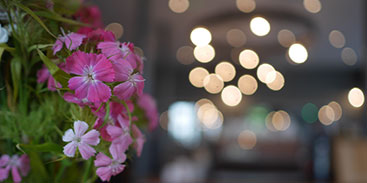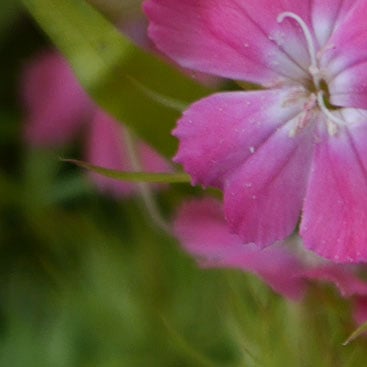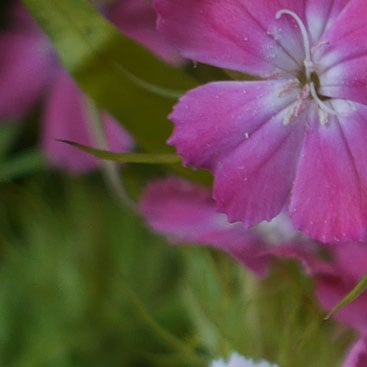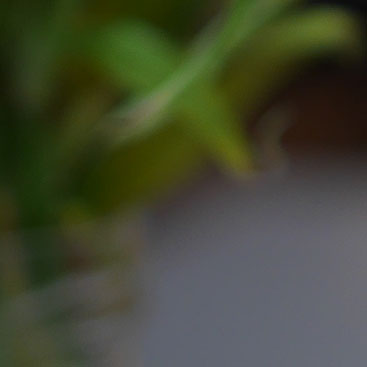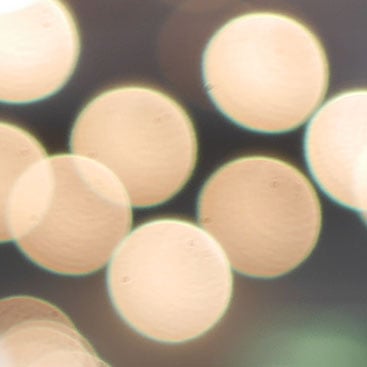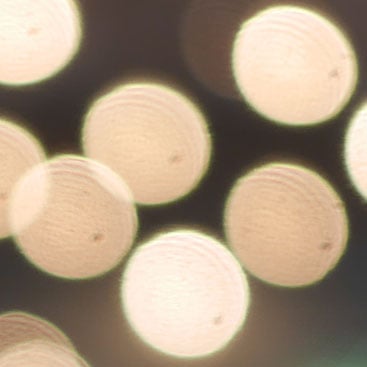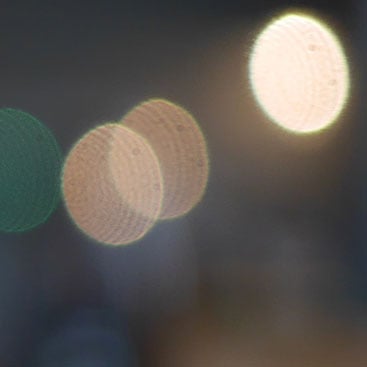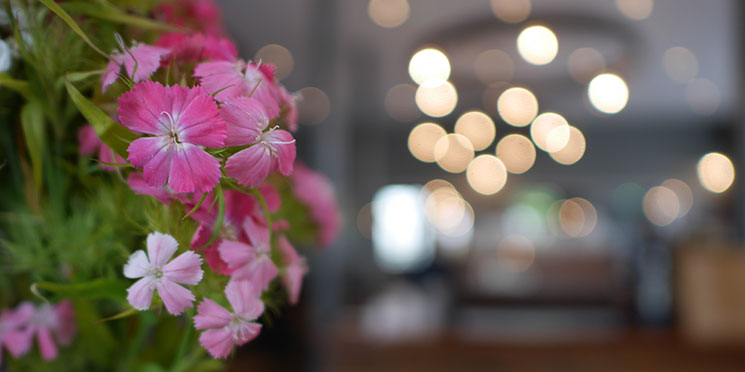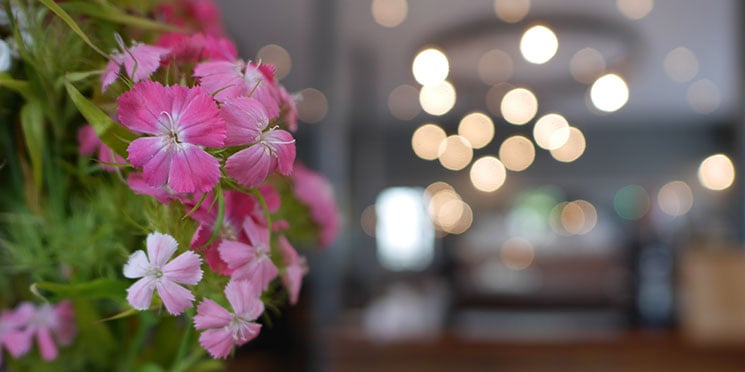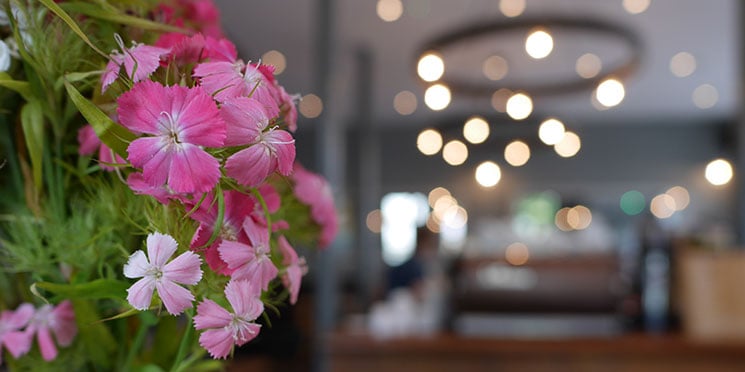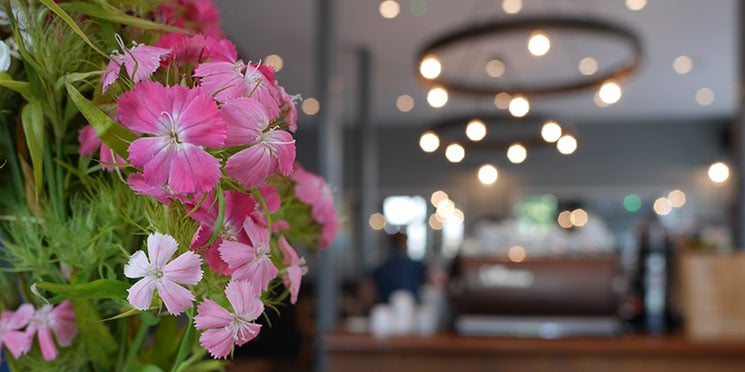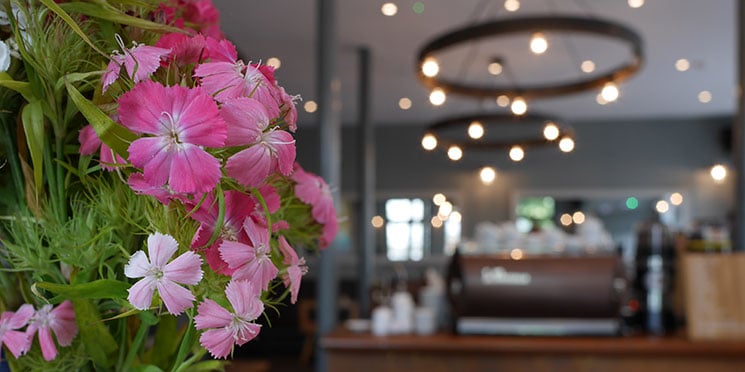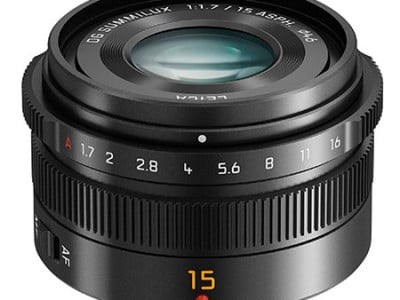Panasonic Leica 15mm f1.7 review
-
-
Written by Gordon Laing
Quality
Leica Summilux 15mm f1.7 quality near and far
To evaluate the real-life performance of the Leica Summilux 15mm f1.7 lens, I shot this exterior scene at every aperture setting using an Olympus OMD EM1 mounted on a tripod. The EM1 was set to its base sensitivity of 200 ISO and the lens focused on the center of the composition using magnified Live View assistance. The corner and center crops shown below were taken from the areas marked with the red squares, right, and presented at 100%.
I also shot this scene moments later using the Olympus 17mm f1.8 lens for a direct comparison and you can find this in the contents, above right. I also have separate pages comparing the depth of field and bokeh of these lenses. Scroll down further for a test at a longer subject distance.
I shot the scene using the EM1’s RAW mode and processed the files in Adobe Camera RAW (ACR) via Photoshop using the following sharpening settings: 50 / 0.5 / 36 / 10. All lens corrections were disabled, so there’s no software compensation for vignetting, geometric distortion or chromatic aberrations, although note the camera may be applying some corrections before the RAW file is recorded which can’t be disabled.
Looking at the first set of crops below from the beach huts, the Leica 15mm delivers very good results straight out of the gate. The performance in the center of the frame starts off looking great even at the widest aperture although closing to f2.8 or f4 brings slightly higher contrast. In the corners there’s some vignetting at f1.7, but this is easily corrected in software, and essentially goes away once the lens is closed to f2.8. There’s minor softness in the far corners at the maximum apertures, but again it still looks pretty good and improves as you close the lens down a little. I’d say the sweetspot for sharpness across the frame is at f4, although the result is very close at f2.8, and again even wide-open at f1.7 the lens delivers very good results.
Like other Micro Four Thirds lenses, I’d avoid using apertures much smaller than f5.6 though unless you absolutely need a huge depth of field, or are stopping down to achieve a special effect. At f8 diffraction has begun to soften the image and reduce contrast, with both steadily deteriorating at f11 and the minimum f16.
Scroll down for some more results with the lens focused at infinity, or see how it compares against a key rival in my Leica 15mm vs Olympus 17mm results. Alternatively move onto my Leica 15mm f1.7 bokeh results, my Leica 15mm f1.7 sample images or skip straight to my verdict.
Leica Summilux 15mm f1.7 corner sharpness | Leica Summilux 15mm f1.7 center sharpness | |
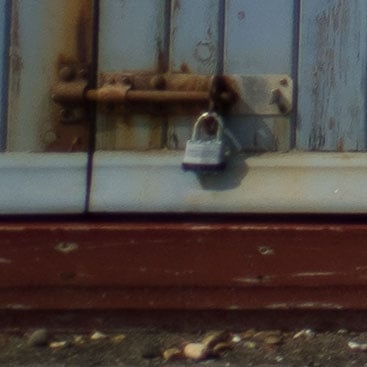 | 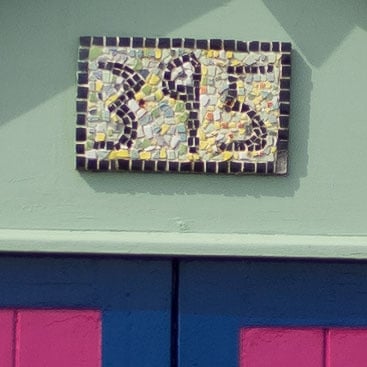 | |
Leica Summilux 15mm f1.7 corner crop at f1.7 | Leica Summilux 15mm f1.7 center crop at f1.7 | |
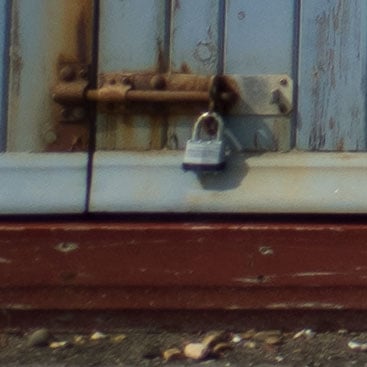 | 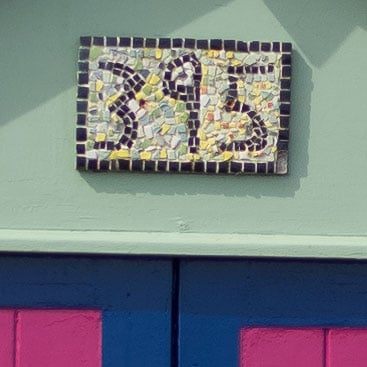 | |
Leica Summilux 15mm f1.7 corner crop at f2 | Leica Summilux 15mm f1.7 center crop at f2 | |
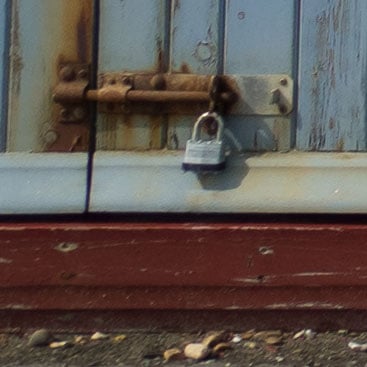 | 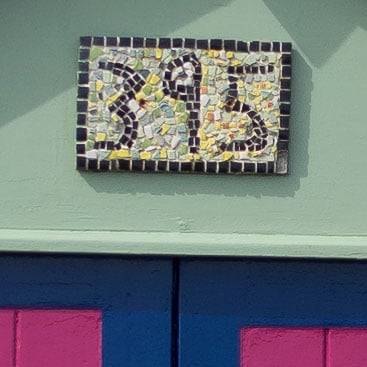 | |
Leica Summilux 15mm f1.7 corner crop at f2.8 | Leica Summilux 15mm f1.7 center crop at f2.8 | |
 | 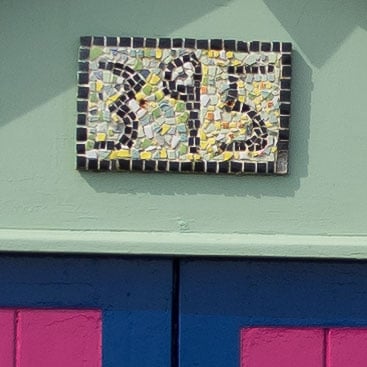 | |
Leica Summilux 15mm f1.7 corner crop at f4 | Leica Summilux 15mm f1.7 center crop at f4 | |
 | 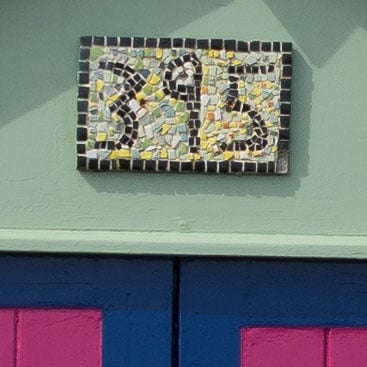 | |
Leica Summilux 15mm f1.7 corner crop at f5.6 | Leica Summilux 15mm f1.7 center crop at f5.6 | |
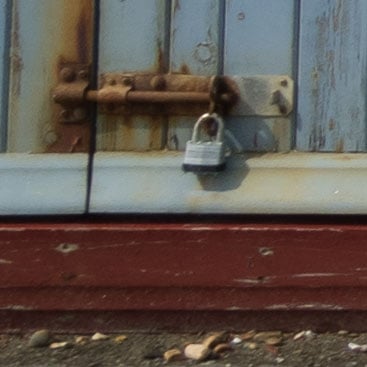 | 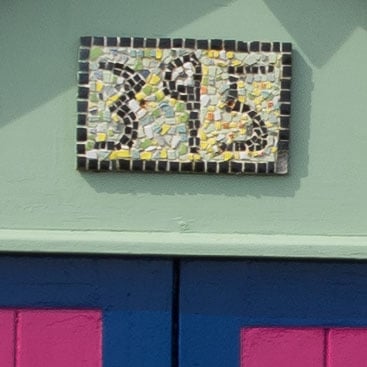 | |
Leica Summilux 15mm f1.7 corner crop at f8 | Leica Summilux 15mm f1.7 center crop at f8 | |
 | 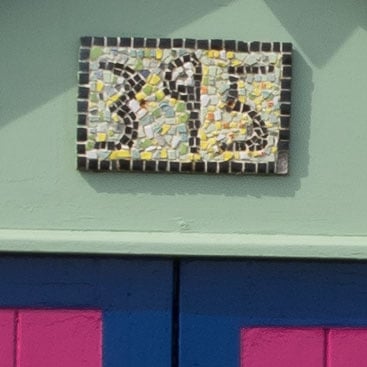 | |
Leica Summilux 15mm f1.7 corner crop at f11 | Leica Summilux 15mm f1.7 center crop at f11 | |
 |  | |
Leica Summilux 15mm f1.7 corner crop at f16 | Leica Summilux 15mm f1.7 center crop at f16 |
Leica 15mm f1.7 quality at infinity
For my second test I shot this scene with the Leica 15mm f1.7 mounted on an Olympus OMD EM1. The subject is more distant than the first test with the lens is effectively focused at infinity. I processed the RAW files in Adobe Camera RAW (ACR) via Photoshop using the following sharpening settings: 50 / 0.5 / 36 / 10. All lens corrections were disabled, so there’s no software compensation for vignetting, geometric distortion or chromatic aberrations, although note the camera may be applying some corrections before the RAW file is recorded which can’t be disabled.
As before, the crop from the center of the image looks good even at the maximum aperture, although you’ll enjoy a little extra detail and contrast if you can stop-down to f2.8 or especially f4 – for example, take a look at the grills on the right hand side of the building in the middle, which are fuzzy at the maximum and minimum apertures, but just managing to be resolved at the sweetspot.
The crops from the side are again pretty respectable wide-open, although there’s some softness and a little chromatic aberration. The latter is easily corrected in software but goes away by itself if you close the aperture to f2.8. At this point the sharpness and contrast also receive a nice boost and any vignetting in the far corners is eliminated.
So if you’re shooting landscapes or architecture with this lens, I’d recommend shooting at f4 for the best results, or f2.8 if you need the extra light. Again the lens is good at f1.7, but if you can close it down by a stop or two, you’ll enjoy crisper results across the frame.
Next see how it compares against a key rival in my Leica 15mm vs Olympus 17mm results, or move onto my Leica 15mm f1.7 bokeh results, my Leica 15mm f1.7 sample images or skip straight to my verdict.
Leica Summilux 15mm f1.7 edge sharpness | Leica Summilux 15mm f1.7 center sharpness | |
 |  | |
Leica Summilux 15mm f1.7 edge crop at f1.7 | Leica Summilux 15mm f1.7 center crop at f1.7 | |
 |  | |
Leica Summilux 15mm f1.7 edge crop at f2 | Leica Summilux 15mm f1.7 center crop at f2 | |
 |  | |
Leica Summilux 15mm f1.7 edge crop at f2.8 | Leica Summilux 15mm f1.7 center crop at f2.8 | |
 |  | |
Leica Summilux 15mm f1.7 edge crop at f4 | Leica Summilux 15mm f1.7 center crop at f4 | |
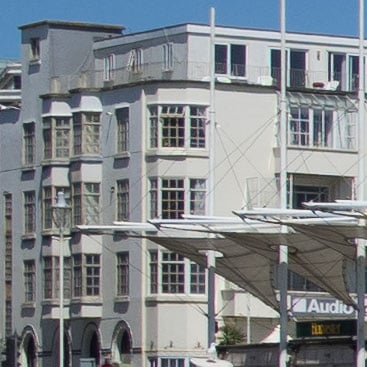 |  | |
Leica Summilux 15mm f1.7 edge crop at f5.6 | Leica Summilux 15mm f1.7 center crop at f5.6 | |
 |  | |
Leica Summilux 15mm f1.7 edge crop at f8 | Leica Summilux 15mm f1.7 center crop at f8 | |
 |  | |
Leica Summilux 15mm f1.7 edge crop at f11 | Leica Summilux 15mm f1.7 center crop at f11 | |
 |  | |
Leica Summilux 15mm f1.7 edge crop at f16 | Leica Summilux 15mm f1.7 center crop at f16 |
Leica Summilux 15mm f1.7 vs Olympus 17mm f1.8
To compare the real-life performance of the Leica Summilux 15mm f1.7 and Olympus 17mm f1.8 lenses, I shot this scene at every aperture setting using an Olympus OMD EM1 mounted on a tripod. When shooting with the slightly longer 17mm, the camera was positioned slightly further away to match the composition.
The EM1 was set to its base sensitivity of 200 ISO and the lenses focused on the center of the composition using magnified Live View assistance. The corner and center crops shown below were taken from the areas marked with the red squares, right, and presented at 100%.
I shot the scene using the EM1’s RAW mode and processed the files in Adobe Camera RAW (ACR) via Photoshop using the following sharpening settings: 50 / 0.5 / 36 / 10. All lens corrections were disabled, so there’s no software compensation for vignetting, geometric distortion or chromatic aberrations, although note the camera may be applying some corrections before the RAW file is recorded which can’t be disabled. In the first table below you’ll see how the two lenses compare in the middle of the frame, and in the second table you’ll see how they compare in the corner.
Starting with the crops from the middle of the frame, I’d say both lenses are resolving roughly the same degree of real-life detail, but it’s clear the Leica is doing so with slightly higher contrast. As expected, both lenses peak in sharpness and contrast at f2.8-4, but the Leica enjoys its lead in contrast throughout the aperture range.
Moving onto the second table where the crops are taken from the corner, the Leica delivers visibly crisper details than the Olympus when wide-open, and with less vignetting too. At f2, the Leica becomes crisper, but the Olympus remains slightly murky in comparison. As you close their apertures to f4, they both reach a peak in performance, but while the sharpness on both is improved, the Leica still enjoys a lead.
The same applies to results with each lens focused on a more distant subject. Don’t get me wrong, the Olympus 17mm f1.8 is still an excellent lens and one most of us would be very happy with, but the Leica is enjoys higher contrast and sharper results if you’re looking closely at samples from both side-by-side.
Next move onto my Leica 15mm f1.7 bokeh results, my Leica 15mm f1.7 sample images or skip straight to my verdict.
Leica Summilux 15mm f1.7 center sharpness | Olympus 17mm f1.8 center sharpness | |
 | 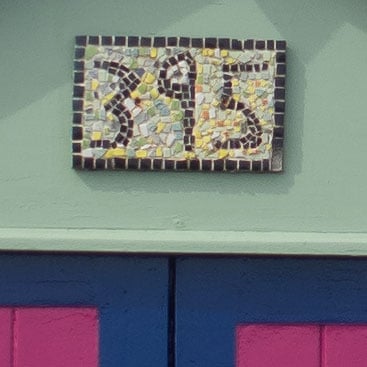 | |
Leica Summilux 15mm f1.7 center crop at f1.7 | Olympus 17mm f1.8 center crop at f1.8 | |
 | 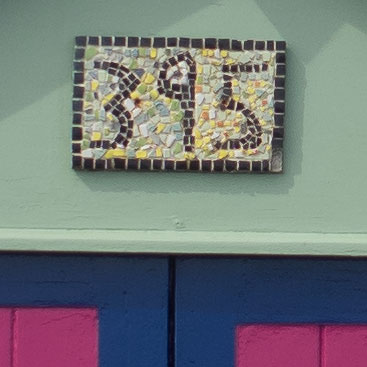 | |
Leica Summilux 15mm f1.7 center crop at f2 | Olympus 17mm f1.8 center crop at f2 | |
 | 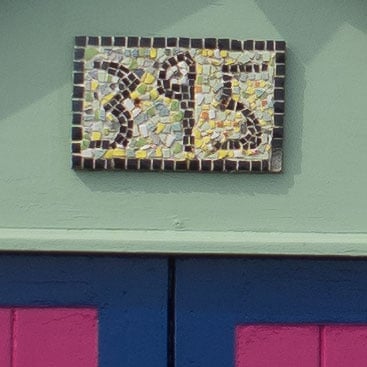 | |
Leica Summilux 15mm f1.7 center crop at f2.8 | Olympus 17mm f1.8 center crop at f2.8 | |
 | 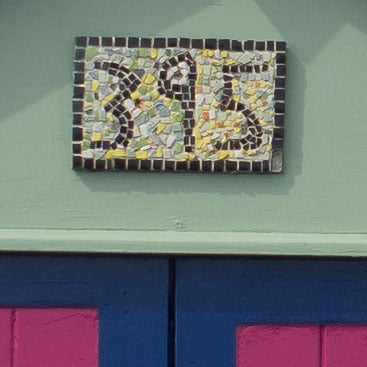 | |
Leica Summilux 15mm f1.7 center crop at f4 | Olympus 17mm f1.8 center crop at f4 | |
 | 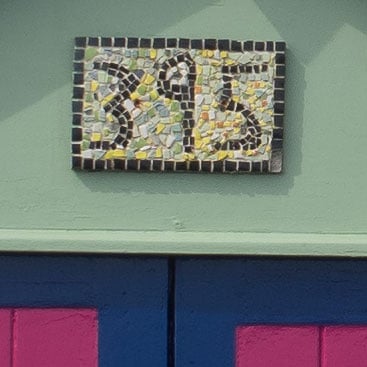 | |
Leica Summilux 15mm f1.7 center crop at f5.6 | Olympus 17mm f1.8 center crop at f5.6 | |
 | 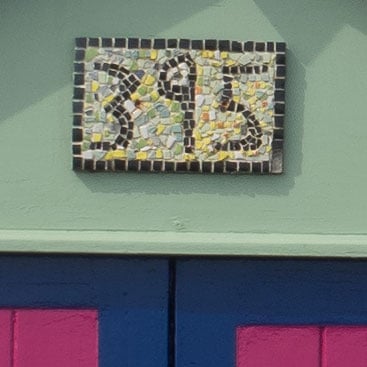 | |
Leica Summilux 15mm f1.7 center crop at f8 | Olympus 17mm f1.8 center crop at f8 | |
 | 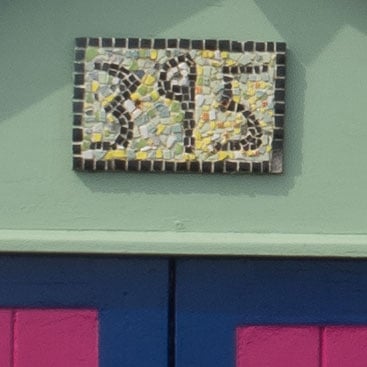 | |
Leica Summilux 15mm f1.7 center crop at f11 | Olympus 17mm f1.8 center crop at f11 | |
 | 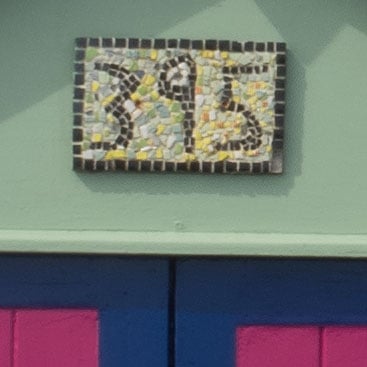 | |
Leica Summilux 15mm f1.7 center crop at f16 | Olympus 17mm f1.8 center crop at f16 |
Leica Summilux 15mm f1.7 vs Olympus 17mm f1.8 corner sharpness
Leica Summilux 15mm f1.7 corner sharpness | Olympus 17mm f1.8 corner sharpness | |
 | 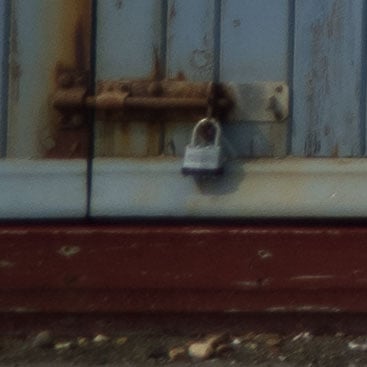 | |
Leica Summilux 15mm f1.7 corner crop at f1.7 | Olympus 17mm f1.8 corner crop at f1.8 | |
 | 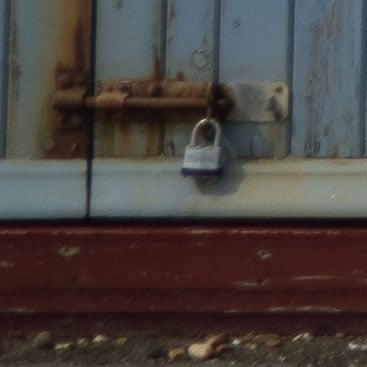 | |
Leica Summilux 15mm f1.7 corner crop at f2 | Olympus 17mm f1.8 corner crop at f2 | |
 | 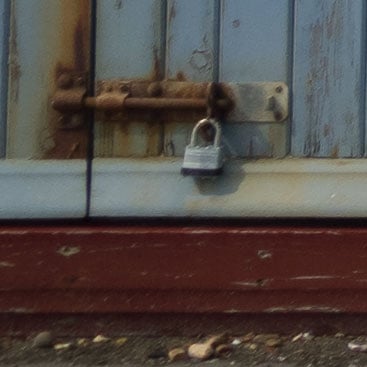 | |
Leica Summilux 15mm f1.7 corner crop at f2.8 | Olympus 17mm f1.8 corner crop at f2.8 | |
 | 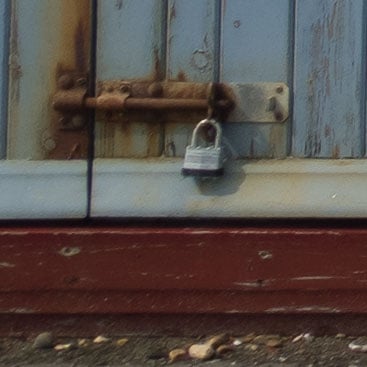 | |
Leica Summilux 15mm f1.7 corner crop at f4 | Olympus 17mm f1.8 corner crop at f4 | |
 | 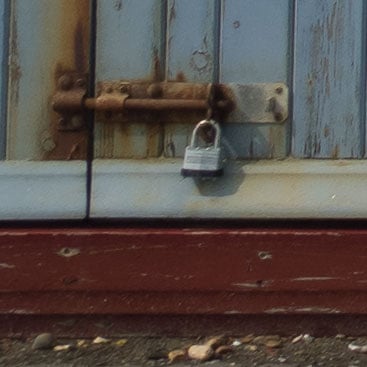 | |
Leica Summilux 15mm f1.7 corner crop at f5.6 | Olympus 17mm f1.8 corner crop at f5.6 | |
 | 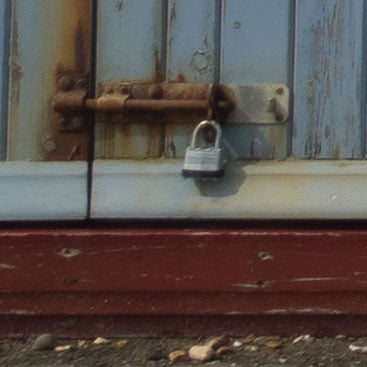 | |
Leica Summilux 15mm f1.7 corner crop at f8 | Olympus 17mm f1.8 corner crop at f8 | |
 | 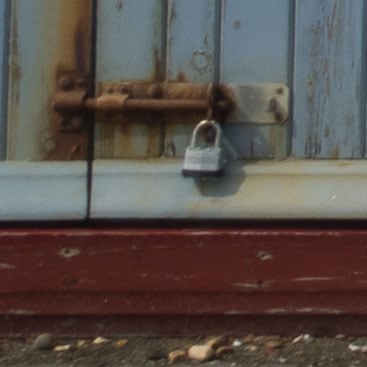 | |
Leica Summilux 15mm f1.7 corner crop at f11 | Olympus 17mm f1.8 corner crop at f11 | |
 |  | |
Leica Summilux 15mm f1.7 corner crop at f16 | Olympus 17mm f1.8 corner crop at f16 |
Leica Summilux 15mm f1.7 Bokeh comparison
To compare the depth of field and bokeh of the Leica Summilux 15mm f1.7 and Olympus 17mm f1.8, I shot this interior scene at every aperture setting using a Lumix GM1 mounted on a tripod. In each case the camera’s position was adjusted to maintain the composition at the different focal lengths.
The GM1 was set to its base sensitivity of 200 ISO and the lens focused on the middle of the largest flower towards the upper left corner of the image. On this page I’m presenting a variety of views and crops to help you evaluate their performance.
On this page I’ll compare the out-of-focus rendering, or bokeh, of the Leica Summilux 15mm f1.7 with the Olympus 17mm f1.8. I’ll start by looking at the full images from each, cropped to show the interesting upper half, then resized to fit in the columns below. I’ve shown the Leica at f1.7 and Olympus at f1.8, then both at f2, f2.8, f4 and f5.6.
The exposures were the same in each example, but you’ll notice the Olympus ones look a little darker – this is due to a small change in natural light entering the room, and I’ll try to ignore it in my analysis.
The first major difference between the two lenses are their focal lengths. I composed the picture so that the flowers were the same size on both sets and also tried to include the same lights in similar positions in the background. But obviously the slightly longer focal length of the Olympus has delivered a slightly different perspective with the background appearing a little larger.
The next difference concerns the out-of-focus rendering of the lights. The Olympus is exhibiting more of the cat’s eye effect towards the edges and corners, transforming the out-of-focus lights from circles to squashed ovals; the Leica isn’t immune to this effect, but it suffers a little less from it. I’d also say the out-of-focus background areas, even in the foliage looks smoother and less busy on the Leica compared to the Olympus, although any preference is ultimately personal.
There’s another difference to note, but to see it we’ll need to take a closer look below. Scroll down for a close-up comparison, or if you’ve seen enough, skip to my Leica 15mm f1.7 sample images or straight to my verdict.
Leica Summilux 15mm f1.7 bokeh | Olympus 17mm f1.8 bokeh | |
Leica Summilux 15mm f1.7 at f1.7 (full image) | Olympus 17mm f1.8 at f1.8 (full image) | |
Leica Summilux 15mm f1.7 at f2 (full image) | Olympus 17mm f1.8 at f2 (full image) | |
Leica Summilux 15mm f1.7 at f2.8 (full image) | Olympus 17mm f1.8 at f2.8 (full image) | |
Leica Summilux 15mm f1.7 at f4 (full image) | Olympus 17mm f1.8 at f4 (full image) | |
Leica Summilux 15mm f1.7 at f5.6 (full image) | Olympus 17mm f1.8 at f5.6 (full image) | |
Leica Summilux 15mm f1.7 Bokeh comparison
To compare the depth of field and bokeh of the Leica Summilux 15mm f1.7 and Olympus 17mm f1.8, I shot this interior scene at every aperture setting using a Lumix GM1 mounted on a tripod. In each case the camera’s position was adjusted to maintain the composition at the different focal lengths.
The GM1 was set to its base sensitivity of 200 ISO and the lens focused on the middle of the largest flower towards the upper left corner of the image. In this section we’ll take a closer look at the rendering.
For this comparison I’ve taken four crops from the maximum aperture images, marked by the red squares on the image above right, and reproduced them here at 50% for a closer look; these are all taken from JPEGs out of camera. In the table below you can see the full images at the top, followed by the 50% crops.
The 50% crops start with the flower head which was the point I focused on. Interestingly the Olympus 17mm f1.8 is showing a crisper result here which may imply superior performance near to their closest focusing distances, but I think more likely it’s a minor focusing error. I’ll investigate further and update if necessary.
The difference in their out-of-focus rendering styles can be seen in the background foliage in this crop – these stems were only a few cm behind the flower, but you can already see how much smoother the bokeh is on the Leica, it’s a lot less busy than the Olympus. Of course the difference is subtle, but you may still prefer one approach over the other. This is repeated in the second row of crops where again the Leica background is less defined than the Olympus.
The final two rows of crops concentrate on the out-of-focus specular highlights and here there are quite visible differences. Both lenses exhibit some of the undesirable onion ring effect where concentric circles and other patterns are visible in out-of-focus light blobs. But I think it’s clear to see this effect is much more pronounced on the Olympus than the Leica. You’ll also notice the Olympus blobs become a little more squashed into cat’s eyes towards the edges of the frame than the Leica.
Close inspection additionally reveals some coloured outlining of the shapes, seen as a green ring here. I’d say the Leica actually suffers a fraction more than the Olympus in this regard, although luckily it’s an aberration that’s easily corrected or at least minimized using software later on RAW files – I found I could make them disappear using Adobe Camera RAW’s chromatic aberration reduction tools.
Overall from this page I’d say the Leica enjoys a small but visible edge over the Olympus when it comes to rendering of out-of-focus areas. The bokeh is smoother and less defined, and specular highlights are rounder and suffer from less of the onion ring effect. Coupled with higher contrast in my resolution and details tests, and I’m confident in saying the Leica 15mm f1.7 has superior optical performance to the Olympus 17mm f1.8, although again the differences are small and you may not notice them unless you knew where to look.
I plan to perform more tests to measure and compare the coma on the lens, but until then it’s time to check out my Leica 15mm f1.7 sample images or skip straight to my verdict.
Leica Summilux 15mm f1.7 bokeh | Olympus 17mm f1.8 bokeh | |
Leica Summilux 15mm f1.7 at f1.7 (full image) | Olympus 17mm f1.8 at f1.8 (full image) | |
Leica Summilux 15mm f1.7 at f1.7 (50% crop) | Olympus 17mm f1.8 at f1.8 (50% crop) | |
Leica Summilux 15mm f1.7 at f1.7 (50% crop) | Olympus 17mm f1.8 at f1.8 (50% crop) | |
Leica Summilux 15mm f1.7 at f1.7 (50% crop) | Olympus 17mm f1.8 at f1.8 (50% crop) | |
Leica Summilux 15mm f1.7 at f1.7 (50% crop) | Olympus 17mm f1.8 at f1.8 (50% crop) | |
Leica Summilux 15mm f1.7 Bokeh
To evaluate the depth of field and bokeh of the Leica Summilux 15mm f1.7 lens, I shot this interior scene at every aperture setting using a Panasonic Lumix GM1 mounted on a tripod. The GM1 was set to 200 ISO and the lens focused on the middle of the largest flower towards the upper left corner of the image. On this page I’ve simply cropped the image roughly in half and reduced it to fit the width of the page, at a selection of the widest apertures. Clicking some of the images will allow you to download the originals from Flickr for a closer look.
On the previous pages I examined the sharpness of the Summilux 15mm f1.7, but now it’s time to see how it renders out-of-focus areas in my bokeh results. I’ll start by looking at the Summilux 15mm in isolation, then will compare it against the Olympus 17mm f1.8.
Below you can see the full images at f1.7, f2, f2.8, f4 and f5.6, cropped to show the more interesting upper half and resized to fit the width of the page; these are all out-of-camera JPEGs taken with the Panasonic Lumix GM1.
With the aperture wide open at f1.7, the Summilux 15mm renders specular highlights as fairly rounded shapes even towards the edges of the frame. Sure there’s some cat’s eye effect where the circles are squashed into ovals, but it’s nowhere near as bad as some lenses I’ve tested. You’ll also notice while there is some evidence of green outlining on the out-of-focus blobs, the 15mm has managed to avoid the undesirable concentric onion ring effect within. It’s also possible to reduce or even eliminate the green outlining using chromatic aberration correction tools on RAW files. Meanwhile even the foliage close to the plane of focus is rendered nicely without distracting business. Overall it’s a very pleasant looking bokeh.
As the aperture is closed, the seven-blade iris is revealed, rendering specular highlights as subtle heptagons. In this example it’s most obvious at f2.8, at which point what little cat’s eye effect has also been eliminated. At smaller apertures more of the foreground and background falls within the depth of field, but the rendering remains smooth and lacks any messiness. It’s a good result for the Summilux 15mm and a style we’ve come to love from Leica.
But how does it compare to a rival lens? Find out in my Lecia 15mm vs Olympus 17mm bokeh results, or skip to my Leica 15mm f1.7 sample images or straight to my verdict.
Leica Summilux 15mm f1.7 at f1.7 (full image width) |
Leica Summilux 15mm f1.7 at f2 (full image width) |
Leica Summilux 15mm f1.7 at f2.8 (full image width) |
Leica Summilux 15mm f1.7 at f4 (full image width) |
Leica Summilux 15mm f1.7 at f5.6 (full image width) |

